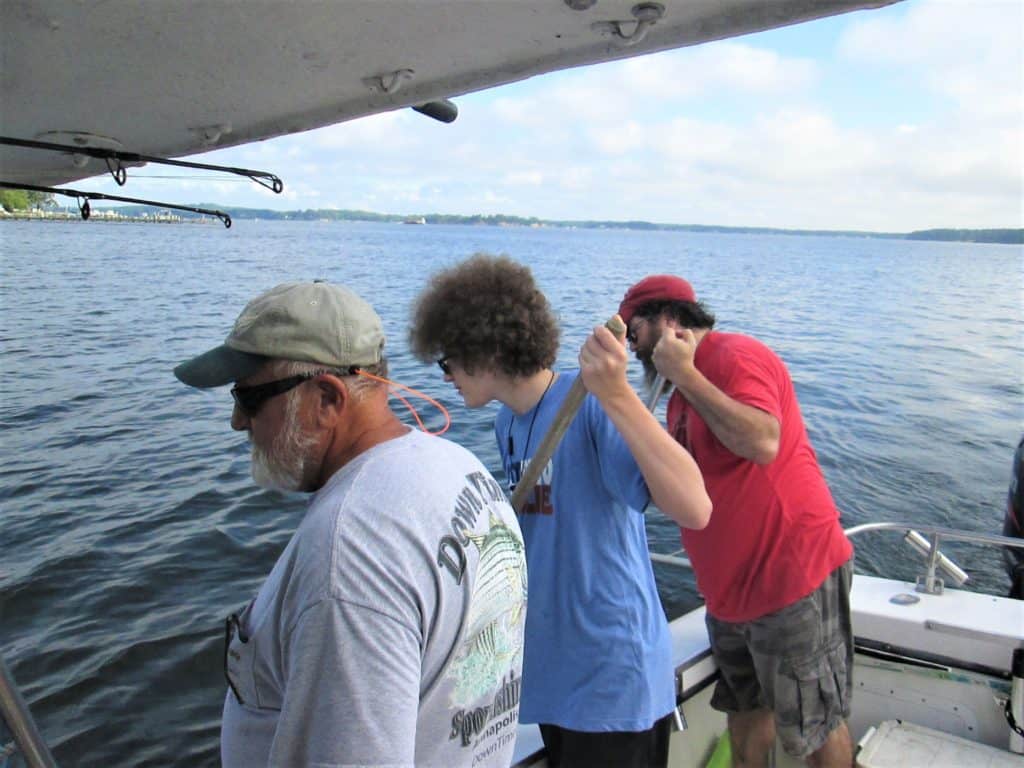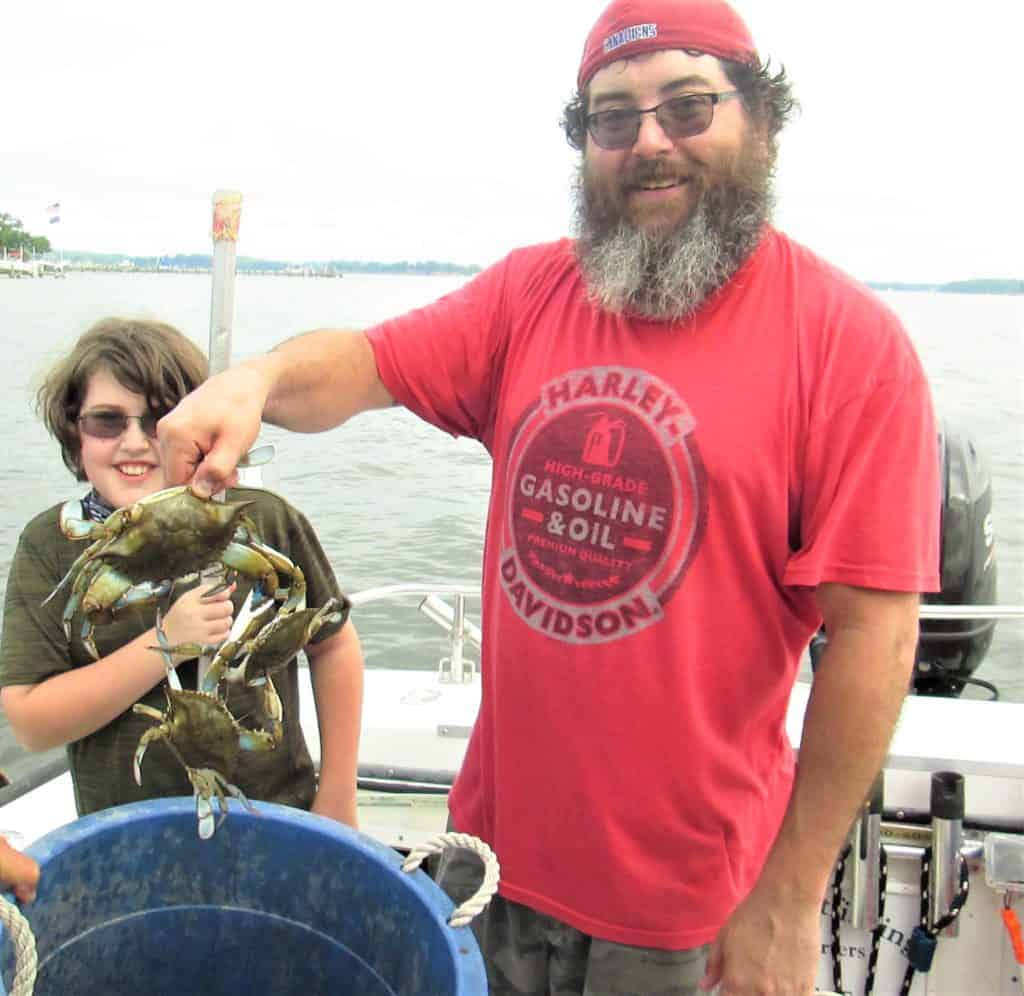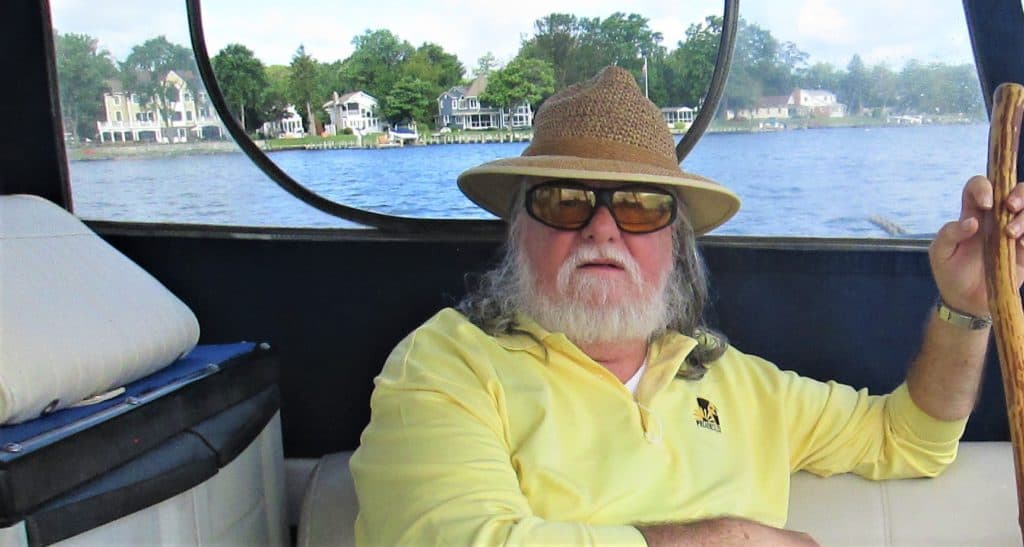Sporting Life
The Last Crabbing Trip for a Smith Islander
It started with a conversation with neighbor and fellow angling fanatic, Frank Tuma. Captain Frank is also a charter boat skipper (Downtime Charters) and during our exchange, he happened to mention that his next day’s party was booked by an old-timer, a Smith Island native, who was going out for his last crabbing trip.
Intrigued, I finagled an invitation to go along as the photographer. Meeting up with the family the next day on board the Downtime, I soon got to know the merry party of four and we began to trade stories including those of the earlier days on the Tidewater.
It turned out that Smith Islander, John Holmes, born in the mid-40s, qualified the statement about this being his last crabbing voyage, declaring “Well, it may not exactly be my last, but I’m worried that it just might be getting close.” He had enlisted his son, Steve Kipton, and Steve’s two sons, Holden, 14, and Brodie, 12, as the netting crew.
The day had dawned nicely in the mid-70s with a solid overcast and a mild breeze. Although the cloud cover would make sighting the crabs difficult as they came near the surface on Frank’s trotline, it also kept them active the whole of the morning. We needed that presence because the Jimmies were also quite skittish, and though plentiful, they spooked off the line at the slightest disturbance, making netting a dicey affair.
Of course, that made for a lively blame game and numerous chances for the young boys to go from a claim of champion crab netter to the bottom of that ladder in just a few fruitless swipes of the net. When I jokingly asked the youngest, Brodie, if he had been named for the sheriff in the movie, Jaws, it turned out, surprisingly, that his father admitted to just that.
After affirming that Jaws was his favorite movie, Steve further admitted that Holden, his oldest, was named for Holden Caufield, the protagonist of Catcher in the Rye by J.D. Salinger. At that point, it seemed proper to congratulate dad for his literary bent in family names. Jaws after all in its original incarnation had also been a best-selling novel by Peter Benchley, before Spielberg’s movie.
When we discussed John’s earlier life on Smith Island, it turned out that though most of his cousins had faithfully remained there, John’s immediate family had left the historic Maryland location quite some time ago for a life in Red Lion, Pennsylvania, a landlocked location near Harrisburg and quite some distance from the isle where he was born.
Red Lion, named for the popular pub in the center of town was an employment draw for many rural citizens from both Pennsylvania and Maryland. Hosting a thriving cigar industry that later morphed into a furniture and cabinet manufacturing center, the city has steadily grown ever since.
John’s mom, while in Smith Island, had little affection, and later, even less nostalgia for the Tidewater life, far preferring beef and chicken to the vast quantities of fish and shellfish that had tormented her on the isle. John also recalled that he might have been the only Smith Island native who had never owned a boat.
Unlike his mom, however, John did miss the savory blue crabs that were so prominent there and has often revisited the Chesapeake area for just that reason. While we ran the crab line and the basket grew ever heavier his eyes misted as he spoke of just how to cook them and how sweet and delicious they were. I couldn’t have agreed more.
*****
Fishfinder:
The rockfish bite remains exceptionally difficult from the Chester to the South Rivers with better success being found north above Swan Point or south into the Solomon Islands and Chesapeake Beach areas. The stark absence of striped bass this season in the waters between cannot be explained, though the continual commercial netting of thousands upon thousands of pounds of rockfish from the overwintering schools from that very area is suspected by many. White perch are the sole salvation for many local anglers this season and while they are mostly under nine inches, they are plentiful. Croaker are unusually numerous though of sub-legal size and some nice sized spot are scattered just about everywhere. Crabbing continues to be mediocre but the Jimmies remain delicious. Try in the five- to seven-foot depths over mud bottom.



